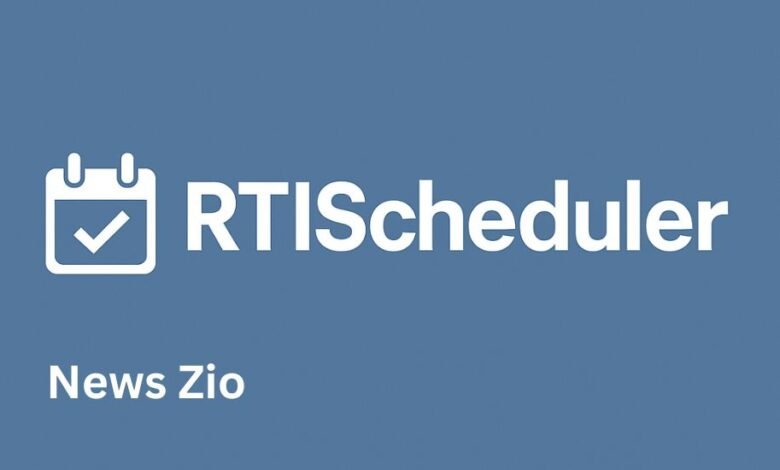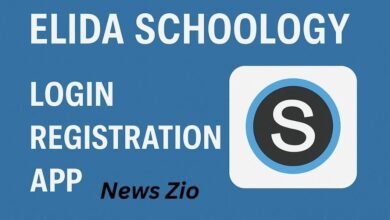RTIScheduler: Enhancing RTI Schedules in Modern Education

In the evolving world of education technology, tools that support targeted instruction, enrichment, and intervention are becoming increasingly vital. One such tool is RTIScheduler, a scheduling platform specifically designed to meet the needs of schools implementing RTI (Response to Intervention) frameworks. By simplifying scheduling, streamlining communication, and ensuring students receive the support they need, RTIScheduler has become a cornerstone for districts focusing on student success.
This article provides a deep dive into RTIScheduler, exploring its functions, how it connects to broader educational practices such as RTI education, RTI schedule planning, and integration with platforms like IXL and CodeHS.
What Is RTIScheduler?
RTIScheduler is a software system that helps schools organize, manage, and execute their RTI schedule. At its core, it allows administrators and teachers to set up flexible time blocks for interventions and enrichment activities. These blocks may be daily or weekly, and they provide an opportunity for schools to target students who need extra help while also engaging those ready for advanced learning.
Key Features of RTIScheduler
-
Flexible Scheduling: Administrators can create daily or weekly RTI blocks tailored to student needs.
-
Student Self-Enrollment: Some implementations allow students to sign up for sessions.
-
Attendance Tracking: Schools can record student participation and use this data for reporting.
-
Integration with SIS and APIs: RTIScheduler supports integration with student information systems and tools like Clever or OneRoster.
-
Teacher & Student Dashboards: Easy-to-use interfaces simplify planning and execution.
RTI Meaning and Its Importance
Before exploring RTIScheduler in detail, it is important to understand RTI meaning. Response to Intervention (RTI) is an educational model designed to provide early, systematic help to students struggling academically or behaviorally.
The RTI Framework
-
Tier 1: Universal instruction provided to all students.
-
Tier 2: Targeted small-group interventions for students needing additional support.
-
Tier 3: Intensive, individualized support for students who continue to struggle.
RTI education is not just about remedial work—it is a proactive system that helps ensure every student receives the right level of support at the right time. RTIScheduler plays a crucial role in operationalizing this model by making RTI school schedules manageable.
RTI Schedule: How RTIScheduler Helps Schools
Creating an RTI schedule can be a daunting task for school administrators. Each student may require a unique type of support, and aligning teachers, time slots, and classroom spaces is logistically challenging.
RTIScheduler addresses these challenges by:
-
Automating Scheduling: Teachers can place students in specific intervention groups without manual spreadsheets.
-
Supporting Data-Driven Decisions: Data from assessments (such as those from IXL or classroom tests) can inform placement.
-
Allowing Real-Time Changes: If a student progresses, their schedule can be quickly updated.
For example, in a middle school, some students may attend a reading intervention session during a 30-minute block, while others may choose enrichment activities such as robotics or coding via CodeHS.
RTI School Implementation: Case Scenarios
Implementing an effective RTI school model often involves balancing academic support with enrichment. Here’s how RTIScheduler supports schools:
Elementary Schools
-
Teachers identify struggling readers.
-
RTIScheduler places them into Tier 2 or Tier 3 reading groups.
-
Other students are scheduled into enrichment activities such as creative writing or math puzzles.
Middle Schools
-
Students are grouped for math interventions.
-
Enrichment choices include coding lessons through CodeHS or adaptive practice with IXL.
High Schools
-
Struggling students get targeted support in subjects like Algebra or Literature.
-
College-ready students may be scheduled into SAT prep or advanced electives.
RTI Connect: Linking Technology and Education
The term RTI connect refers to the growing movement of connecting educational technology systems with RTI frameworks. RTIScheduler sits at the heart of this connection by:
-
Linking data sources like IXL diagnostic assessments.
-
Integrating with coding education platforms like CodeHS to provide enrichment.
-
Ensuring RTI education goals align with teacher tools and administrative reporting.
This creates a seamless experience where data drives instruction and interventions are aligned with student needs.
CodeHS and RTIScheduler: Enrichment Through Coding
CodeHS is an increasingly popular tool in schools, offering an online coding platform for K–12. With RTIScheduler, schools can create enrichment blocks where students interested in programming, web design, or even game development can log into CodeHS and complete projects.
This integration ensures enrichment is not just an afterthought but a structured, scheduled part of the RTI school model. Students needing academic support receive interventions, while advanced learners gain opportunities to expand skills.
IXL and RTIScheduler: Personalized Learning Support
Another major tool in modern education is IXL, an adaptive practice platform. When integrated with RTIScheduler, IXL data can help identify which students need targeted support.
-
Diagnostic Results: Teachers can place students into RTI groups based on weaknesses identified by IXL.
-
Practice Sessions: Scheduled RTI blocks allow time for students to practice skills directly on IXL.
-
Tracking Growth: Administrators can compare RTIScheduler attendance with progress made in IXL reports.
This pairing of platforms ensures a data-driven RTI schedule that benefits both teachers and students.
Benefits of RTIScheduler in Education
Schools adopting RTIScheduler report several benefits:
-
Efficiency: Teachers spend less time coordinating schedules and more time teaching.
-
Equity: Every student receives access to interventions or enrichment.
-
Accountability: Attendance and performance data make it easier to evaluate interventions.
-
Customization: Schools can tailor schedules to match their unique RTI education frameworks.
-
Student Empowerment: In some models, students can choose sessions, giving them ownership of their learning.
Challenges in RTI Scheduling and Solutions
While RTI Response to Intervention is a powerful framework, schools face challenges such as limited staff, time constraints, and maintaining student motivation.
RTIScheduler addresses these by:
-
Maximizing Staff Resources: Scheduling tools prevent overlap and allow efficient use of teachers.
-
Providing Flexibility: Schedules can be adjusted weekly.
-
Encouraging Student Engagement: Enrichment options such as CodeHS and interactive tools like IXL keep students motivated.
The Future of RTIScheduler and RTI Education
As schools increasingly adopt digital platforms, the role of RTIScheduler will expand. Future possibilities include:
-
AI-Powered Scheduling: Automated placement of students into groups based on predictive analytics.
-
Deeper Integrations: Stronger ties with tools like IXL, CodeHS, and assessment platforms.
-
Holistic MTSS Support: Beyond academics, scheduling interventions for social-emotional learning and behavioral supports.
The growth of RTI education depends not only on strong instructional practices but also on tools that make implementation sustainable.
Conclusion
RTIScheduler has become a vital tool for schools committed to RTI Response to Intervention. By aligning RTI schedules with real-time student data and integrating with platforms like IXL and CodeHS, it ensures that every child receives personalized attention—whether for academic support or enrichment opportunities.
In the modern educational landscape, the blend of technology, data, and instruction is essential, and RTIScheduler sits at the center of this transformation. Schools adopting such tools are better equipped to serve students, support teachers, and meet the goals of RTI education.
Published by News Zio



